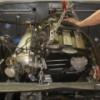RB30DET turbo choices
Announcements
-
Similar Content
-
Latest Posts
-
By Dose Pipe Sutututu · Posted
The hardcore tracks1ut guys I know would flush their brake fluid every 6 to 12 months depending on the amount of track work they did. Unlike most of us SAU guys, probably flush it once a decade 🥲 -
Now that these are NLA, I suspect the answer is going to be to 3D print the plastic bit and glue on some felt or something to replace the brush. I have one or two of them (new) in the shed to go onto the car at some point. I could put some effort into measuring them up and could attempt to draw up the printed part in FreeCAD, if there is interest.
-
By Dose Pipe Sutututu · Posted
Hey team, the R32 ones look different to the R33 and 200SX ones. Also they're sold out on Amayama, looks like some dealer cleaned up the stock. -
By soviet_merlin · Posted
Might have to @Dose Pipe Sutututu him
-






Recommended Posts
Create an account or sign in to comment
You need to be a member in order to leave a comment
Create an account
Sign up for a new account in our community. It's easy!
Register a new accountSign in
Already have an account? Sign in here.
Sign In Now